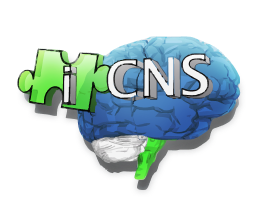qEEG
Cutting edge technology lets us see what the brain is really doing!
$750.00
qEEG stands for "quantitative electroencephalogram" and it can also be called a "brainmap." It is an assessment tool that shows us the speed and amount of brain activity across the whole head and compare it with the patterns we expect it to make based on your age and gender... Then we can change it!

The brain's patterns help us understand behavior... and we can change it
"I'm awesome at my job, but I really struggle to get my paperwork done."
"I'm so tired but I just can't sleep well."
"My kid is so smart, but he/she/they can't seem to get their homework done."
"I swear I'm not crazy, but I'm just so anxious all the time."
The behavior patterns that cause stress and struggle in our daily lives are not always conscious choices. Sometimes, they have a neurological component. Our brains can develop unexpected patterns that influence the speed and flexibility of our tasks, and really color the way we experience life. The qEEG lets us see these patterns and identify behavior that is not optimal, so that we can change it, sometimes by changing the brainwave patterns with neurofeedback, and sometimes with coping strategies and behavioral interventions.

What happens during the data collection session
The Quantitative EEG consists of placing an electrocap (it looks like a swimmer's cap with holes which contain electrodes) on your head, using a conductive gel to bridge the gap between your scalp and the sensor, and hooking the cap up to a monitoring unit called an amplifier.
The amplifier is connected to the computer, which records and analyses the electrical activity of the brain, and graphs them out as an EEG tracing. "EEG" stands for electroencephalograph, which is a big word for "brain wave graph." Once I have verified that the signal is good, I will ask you to close your eyes for approximately 10 minutes, but not fall asleep. Once I have enough data, I will ask you to open your eyes and stare at a point on the wall, blinking as little as possible, again for about 10 minutes. That's all you have to do! At the end of recording I will remove the cap, clean off as much of the gel as I can, and the session is over.
What I do between the data collection and the review
I then clean up the data and send the data through a normative database. Your brainwave activity will be compared to other individuals your age, handedness, and gender. After all, men and women are actually wired differently!
Once the comparison is done, a report will be generated which explains how your brain is functioning, both on its own and when compared to the database. This report will also show us maps of your brain from an electrical standpoint. The sheer amount of information we receive in these reports is staggering!
What to expect in the review session
I believe in being as open with you as possible, and so my fee for the Q-EEG also includes an hour and a half of sitting down with you and explaining what the report says and how it is impacting your life. We discuss what I expected to see based on your symptomology and how the results confirm or deviate from that expectation. The good news is always that I can develop a plan to target those areas of the brain most in need of change, and we can strengthen the parts of the brain that are already doing what they should.
Why should I do a qEEG before starting neurofeedback?
While the Q-EEG is a wonderful tool on its own, its real benefit is in planning and implementing neurofeedback protocols. When I know exactly what is going on in the brain, I get a very good picture of what to train, where to train, and what method of training will best address your symptoms!
Can I just come get a qEEG and not do neurofeedback?
Definitely! I have had many clients come for a qEEG because it gives a lot of insight into what's going on in the brain, where it is behaving within a functional range, and where it is behaving outside of that. Sometimes, it answers questions that we didn't even know needed to be asked. There can be a lot of healing that comes from understanding the neurological patterns that underlie behavior patterns, and help us identify coping strategies more effectively.
Why does it cost $750?
I charge $750 for the qEEG for several reasons.
Time: 3.5 hours in session, up to 5 hours outside of session.
2 hours to collect the data
2-5 hours analyzing and interpreting the data
1.5 hour review session
Cost of doing the assessment
Unlike a traditional therapy session, qEEG also has some pretty big material costs
Expensive Hardware
Consumable supplies like sensors and gels
Software costs
Database access costs
The reality is that, if I charged my full hourly rate for the time spent, the qEEG would be much more expensive. Some providers I know charge over $1,400 for the same assessment. However, I have not raised my qEEG rates since adding it to my practice in 2010, because I believe in the power of this assessment to direct neurofeedback protocols, as well as the direct benefit to the client that comes from the review session. I know it is an investment, but it is worth it.
